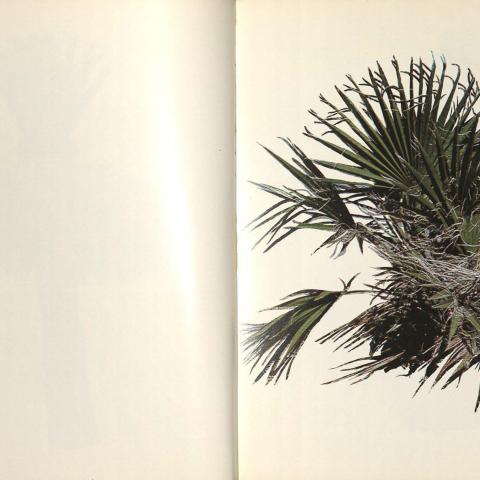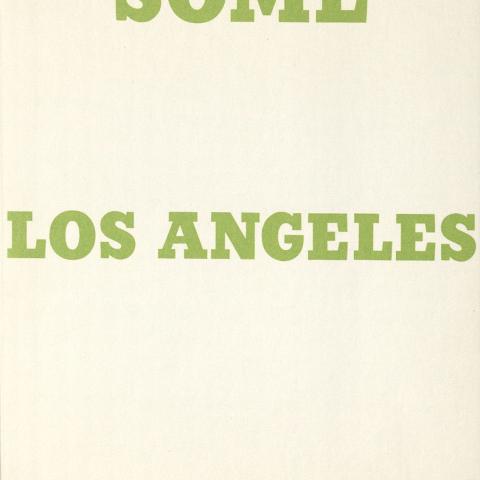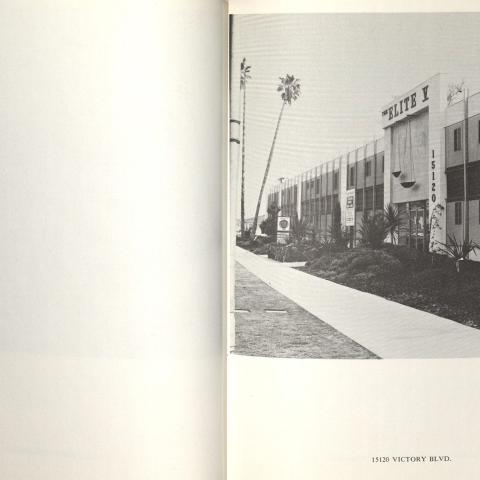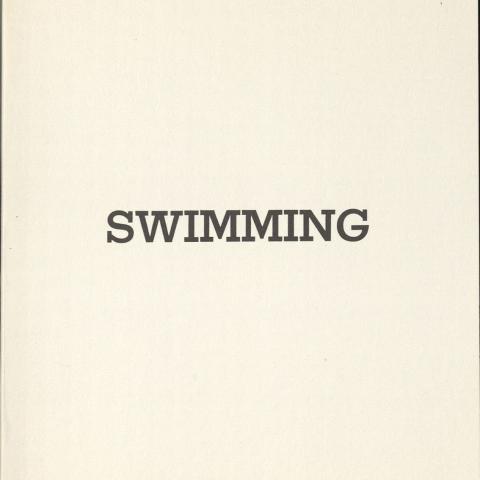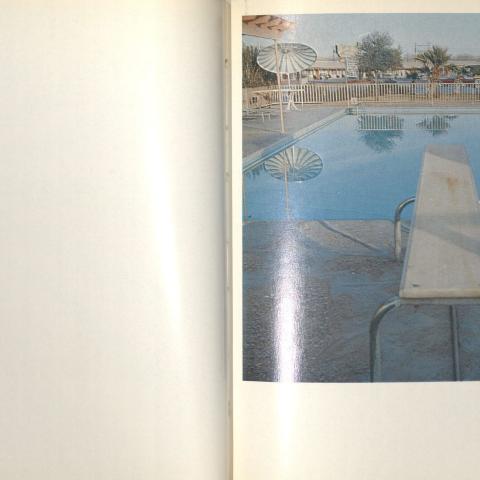Works of Ed Ruscha
August 12, 2025
Over the past 70 years, artist Ed Ruscha has created work that reflects the architecture, culture, and sprawl of Los Angeles with his signature deadpan style and wit. He first arrived in the city from Oklahoma in 1956 to attend the Chouinard Art Institute (now Cal Arts). At the time, many LA-based artists were migrating to New York City - the epicenter of the art world at the time - yet Ruscha remained, not only finding artistic inspiration in the city but eventually becoming a central beacon in its now thriving art scene.
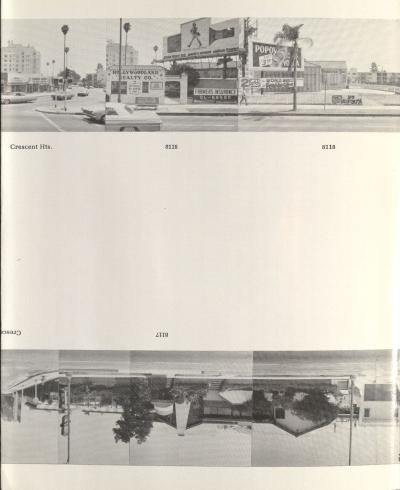 During the 1960s and 1970s, Ruscha published over a dozen artists’ books, each featuring a series of photographs documenting mundane objects or landscapes in a spare, straightforward photographic style. He submitted his first book, Twentysix Gasoline Stations - which is exactly what it sounds like, twenty six photographs of gasoline stations - to the Library of Congress, who initially rejected it citing the “unorthodox form and supposed lack of information.” Ruscha playfully highlighted this rejection by placing an ad in the March 1964 issue of Artforum, which read, “REJECTED Oct. 2 1963 by the Library of Congress Washington D.C. 25 copies available @ $3.00.” Today, his artist books continue to challenge what constitutes a book, photograph, and work of art.
During the 1960s and 1970s, Ruscha published over a dozen artists’ books, each featuring a series of photographs documenting mundane objects or landscapes in a spare, straightforward photographic style. He submitted his first book, Twentysix Gasoline Stations - which is exactly what it sounds like, twenty six photographs of gasoline stations - to the Library of Congress, who initially rejected it citing the “unorthodox form and supposed lack of information.” Ruscha playfully highlighted this rejection by placing an ad in the March 1964 issue of Artforum, which read, “REJECTED Oct. 2 1963 by the Library of Congress Washington D.C. 25 copies available @ $3.00.” Today, his artist books continue to challenge what constitutes a book, photograph, and work of art.
Among his most well known artists’ books is Every Building on the Sunset Strip. Published in 1966, the accordion style book stretches 27 feet revealing a panoramic photocollage documenting both sides of Sunset Boulevard in Los Angeles. To achieve this, he mounted a motorized camera on the back of his pickup truck and drove, capturing a two mile stretch of the street. It is a straightforward, yet compelling time capsule, documenting one small portion of a constantly changing city. In fact, he documented this stretch periodically over 40 years. In 2020, after acquiring a portion of Ruscha’s photographic archive, the Getty Research Institute published a Google Maps-style interactive website, 12 Sunsets which allows users to drive down Sunset Boulevard and toggle the view from 12 different years between 1965 and 2007.
In addition to Twentysix Gasoline Stations and Every Building on the Sunset Strip, Special Collections and Archives also has copies of several of Ruscha’s other artists’ books including Some Los Angeles Apartments (1965), Nine Swimming Pools (and a Broken Glass) (1968), Records (1971), and Colored People (1972).
Image Gallery
Post tagged as: special collections, rare books, los angeles, california
Read more Peek in the Stacks blog entries